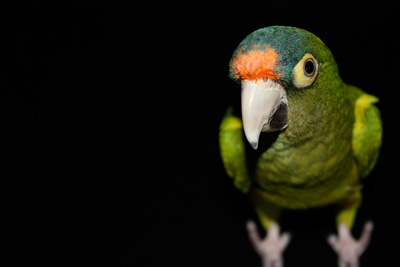There’s a significant difference between sharing personal photos you altered on a social network and relying on the same methodology to promote your business
As graphic designers, we hear this phrase a lot from new clients: “We want to look like Apple!” But what most don’t realize is that “looking like Apple” involves investing in a graphic design team that can produce that type of cutting-edge imagery.
From its inception, Apple relied on high-quality, slick-looking imagery to sell its products. A young Steve Jobs was initially inspired by the work of architect and interior designer Frank Lloyd Wright, a man who believed in a philosophy he called “organic architecture.” Wright was the leader of the Prairie School architectural style that dominated the U.S. in the late 19th century and early 20thcentury. Growing up in a neighbourhood Wright had designed left an indelible mark on Jobs. Thanks to Wright’s work, it started Apple’s co-founder down a path of insisting on distinctive, clean, beautiful but simple designs for his company’s products.
To put it another way, if you’re shopping for used goods on Kijiji, chances are you’re more inclined to click on a classified ad which features crisp, clear photographs of an item up for grabs instead of one with photos that are blurry or dimly lit. Why? In all likelihood, it’s because you suspect the item for sale with the shoddy photos is of poor quality or that the seller is untrustworthy. Now apply the same train of thought to the quality of the images you want to use on your company’s website or in its marketing materials.
Your company’s website, and the photos you use to promote its products and services should never cause potential customers to doubt the high level of professionalism you and your team are capable of delivering. However, subpar imagery will do exactly that.
Hiring a Professional versus Do-It-Yourself
Advancements in raster graphics editor programs (software that allows anyone to create or edit images on a computer) has spawned a generation of amateur, do-it-yourself (DIY) image editors. Many of the freely available image editing software programs available are capable of coming close to matching the full-featured professional software designers use. It’s become commonplace for anyone with a smartphone or desktop computer to simply add a predefined filter to a digital photo, adjust the image’s level of brightness and contrast, and then upload it to Instagram, Facebook, or Pinterest. But there’s a significant difference between sharing personal photos you altered on a social network and relying on the same methodology to promote your business.
Here are three reasons why you should work with a professional design team to retouch your photographs and design your marketing materials:
- Experience and expertise. Graphic designers have professional training, and they have honed their craft over many years. They have a deep understanding of the art of photography, the high-quality editing software they use on a daily basis, and they know how to leverage both to make your business stand out from your competition. Moreover, designers know how to produce the professional-looking business materials you want, even if you’re unable to convey to them what that is exactly.
- Time and money. Despite the enthusiasm for taking the DIY approach, it’s not a wise business decision to make. Graphic designers know the most cost-effective ways to produce the high-quality photos and marketing materials you want in a reasonable amount of time. You’re busy running your business and serving your customers. How will you find the time to research, design, and create a professional logo, photos, and sales and marketing brochures?
- Consistency and continuity. Every professional graphic designer takes pride in his/her work. They know if your materials don’t look good, neither do they. Quality design includes consistency and continuity across all of your online properties and printed materials. A designer will zero in on ensuring every pixel in every one of your images is perfect. They know what fonts and colour patterns to use, and they’ll ensure the overall look of all of your company’s marketing and promotional materials meshes with your brand and resonates with your targeted audience.
“There are three responses to a piece of design: ‘yes’, ‘no’, and ‘wow!’ Wow is the one to aim for.”
– MILTON GLASER
Getting the Results You Want
Though on the surface it may seem like improving a digital image is quick and easy to do, more often than not it’s far more in-depth work. Professional designers know how the human eye works, how and where it will rest on an image, and how colour and graphic layout can impact emotions and stir intellectual activity.
In some cases, photo retouching can be straightforward. In other cases, it can be vastly complicated. Here are a couple of examples of where that complexity comes into play.
In the first example to the left, the goal is to remove the framework we can see in the background of this image from the sky. The sky features a subtle gradient that gradually changes from light to dark grey. It will be tricky, but we need to ensure the sky is painted carefully to avoid banding in the colour and creating discrepancies.
To the left, we can see pillars in the background. We also have to remove the framework from this area. We are no longer dealing with a smooth background colour as the sky. Now we must remove the framework and add textured pillars seamlessly. We would achieve a similar effect if we removed the framework the model is resting on and simply showed the tiled floor. Regardless, a textured background such as this one will need to be replaced, all the while ensuring it fits perfectly with the rest of the image’s lighting and its overall perspective.
Now cast your eyes upon the parrot and its beautiful plumage below (apologies to Monty Python). Our goal with this image is to isolate the bird by removing him from the black background. As the background is one consistent colour, it appears to be easy to select and isolate the contrasting parrot, but the bird’s body is out of focus. If we’re not careful, we’re going to get a parrot with a blurry black outline in places where the attempt to isolate him from the background is made. It is possible to isolate him, but it would be far easier to do if the parrot was entirely in focus.
In the end, investing in a professional design team to edit your photos and give your business that “wow” factor will help you attract more customers and grow your business. It may be cheaper to take the DIY route, but the sting of the less-than-stellar quality of your marketing materials will last much longer than the initial satisfaction you felt by saving a few bucks.


